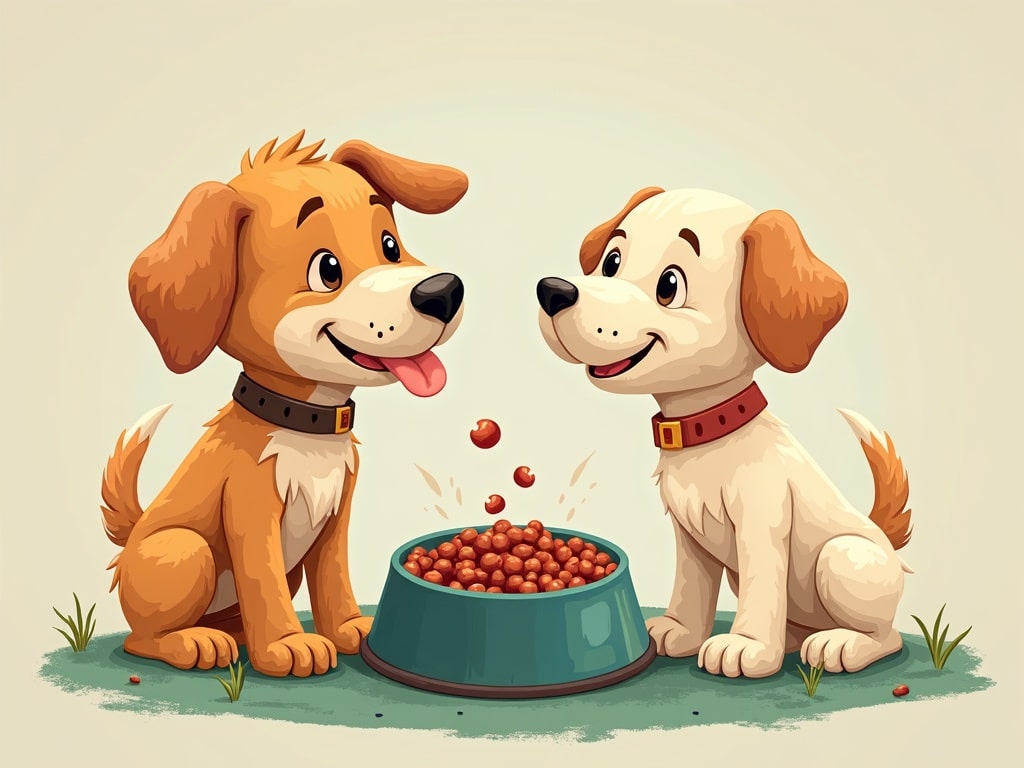Beyond the Bowl: Expert Nutrition Tips for a Thriving Puppy
Bringing a puppy into your life is one of the most rewarding experiences imaginable. Those first few weeks and months are a whirlwind of playful nips, clumsy tumbles, and the irresistible charm that only a puppy can possess. But beneath all that cuteness lies a serious responsibility: ensuring your new furry friend gets the proper nutrition to fuel their rapid growth and development. Forget simply filling a bowl – this is about building a foundation for a lifetime of health and vitality. Are you ready to go beyond the bowl and unlock the secrets to a thriving puppy?
Puppy Nutritional Needs: Laying the Foundation for a Healthy Future
Puppies aren’t just small dogs; they have unique nutritional needs that differ significantly from adult dogs. Their bodies are working overtime to build bones, muscles, and a strong immune system. Understanding these crucial requirements is the first step in providing optimal care.
- Protein: The building block of life! Puppies need high-quality protein to support muscle growth and tissue repair. Look for food with a named protein source (chicken, beef, lamb) as the first ingredient.
- Fat: Provides energy and supports brain development. Essential fatty acids like Omega-3 and Omega-6 are particularly important for cognitive function and a healthy coat.
- Carbohydrates: A source of energy for active puppies. Choose easily digestible carbohydrates like rice or oatmeal.
- Vitamins and Minerals: Crucial for bone development, immune function, and overall health. Calcium and phosphorus are vital for strong bones and teeth.
- DHA (Docosahexaenoic Acid): An Omega-3 fatty acid that supports brain and vision development.
Choosing the Right Puppy Food: A Tailored Approach
The overwhelming array of puppy food options can be daunting. Here’s how to navigate the pet store aisle and select a food that meets your puppy’s specific needs.
Breed Size Matters
Puppies are generally categorized into small, medium, and large breeds. Large breed puppies have unique concerns related to bone growth. They need a food formulated to control their growth rate to prevent developmental problems like hip dysplasia.
- Small Breed: Look for smaller kibble sizes that are easier for tiny mouths to manage.
- Medium Breed: Standard puppy food formulations are generally suitable.
- Large Breed: Choose a large-breed puppy food with controlled levels of calcium and phosphorus.
Age Appropriateness
Puppy food is specifically formulated for growing bodies. Avoid feeding adult dog food to puppies, as it lacks the necessary nutrients. Check the life stage indication on the packaging to ensure it’s suitable for puppies.
Activity Level
A highly active puppy will require more calories than a couch potato. Adjust portion sizes accordingly, and consult with your veterinarian if you’re unsure.
Reading the Label
Ingredients are listed in descending order by weight. Look for a named protein source first, followed by whole grains or carbohydrates. Avoid foods with excessive fillers or artificial additives.
Puppy Feeding Schedule: Consistency is Key
Establishing a consistent feeding schedule is crucial for house training and preventing overeating. Puppies need to eat more frequently than adult dogs due to their high energy needs and small stomach capacity.
- 8-12 Weeks Old: Four meals per day
- 3-6 Months Old: Three meals per day
- 6-12 Months Old: Two meals per day
After 12 months, most dogs can transition to once-a-day feeding, or continue with twice-a-day feeding if preferred.
Portion Control for Puppies: Striking the Right Balance
Determining the correct portion size is essential to prevent overfeeding or underfeeding. Use the puppy feeding guide on your chosen food as a starting point, but remember that these are just guidelines.
- Weigh your puppy regularly: Track their weight to ensure they’re growing at a healthy rate.
- Monitor their body condition: You should be able to feel their ribs easily, but they shouldn’t be visible.
- Adjust as needed: If your puppy seems hungry all the time or is gaining weight too quickly, adjust the portion size accordingly.
Understanding Puppy Food Labels: Decoding the Details
Pet food labels can be confusing. Here’s a breakdown of what to look for:

- Guaranteed Analysis: This section lists the minimum percentage of crude protein and crude fat, and the maximum percentage of crude fiber and moisture.
- Ingredients List: Ingredients are listed in descending order by weight, before processing..
- AAFCO Statement: This statement indicates whether the food meets the nutritional levels established by the Association of American Feed Control Officials (AAFCO) for puppies.
- Feeding Guidelines: These guidelines provide a starting point for determining how much to feed your puppy, based on their weight and age.
Hydration for Puppies: The Water Works
Water is essential for all living beings, and puppies are no exception. They need constant access to fresh, clean water to stay properly hydrated.
- Always provide fresh water: Change the water bowl daily, and clean it regularly.
- Monitor water intake: Pay attention to how much water your puppy is drinking. Sudden changes in water consumption can be a sign of a health problem.
- Consider a water fountain: Some puppies prefer drinking from a moving water source.
Safe Treats and Snacks for Puppies: Reward Responsibly
Treats can be a valuable tool for training and bonding with your puppy, but it’s essential to choose healthy and safe options.
Safe Options
- Puppy-specific treats: These are formulated to be easily digestible and provide essential nutrients.
- Small pieces of cooked meat: Plain chicken, turkey, or beef (no bones, skin, or seasoning).
- Fruits and vegetables: Carrots, apples (no seeds), and blueberries are good choices in moderation.
Treats to Avoid
- Chocolate: Toxic to dogs.
- Grapes and raisins: Also toxic.
- Onions and garlic: Can damage red blood cells.
- Bones: Can splinter and cause internal damage.
- Processed human food: Often high in sugar, salt, and unhealthy fats.
Remember that treats should only make up a small portion of your puppy’s daily calorie intake. The 10% rule applies: treats can only represent 10% of the daily calorie intake.
Transitioning Puppy Food: A Gradual Shift
Switching puppy food abruptly can lead to digestive upset. To avoid this, transition gradually over 7-10 days.
- Day 1-3: Mix 25% new food with 75% old food.
- Day 4-6: Mix 50% new food with 50% old food.
- Day 7-9: Mix 75% new food with 25% old food.
- Day 10: Feed 100% new food.
Monitor your puppy’s stool during the transition. If they develop diarrhea or vomiting, slow down the process or consult with your veterinarian.
Addressing Common Puppy Feeding Problems: Troubleshooting Tips
Even with the best intentions, you may encounter some common feeding problems with your puppy.
- Picky eating: Try warming the food slightly to enhance the aroma. You can also add a small amount of broth (unsalted) or plain yogurt.
- Diarrhea: This can be caused by various factors, including food sensitivities, parasites, or stress. If the diarrhea is severe or lasts for more than 24 hours, consult with your veterinarian. Probiotics can help promote healthy gut bacteria.
- Food guarding: This is more common with rescue puppies that have had to fight for food. Feed your puppy in a quiet place, and avoid disturbing them while they’re eating. Hand-feeding some of the food can help build trust.
- Eating too fast: Use a slow-feeder bowl or puzzle feeder to slow down their eating and prevent bloat.
When to Consult a Veterinarian: Seeking Professional Guidance
While this puppy feeding guide provides comprehensive information, it’s essential to remember that every puppy is unique. If you have any concerns about your puppy’s diet or health, consult with your veterinarian. They can provide personalized advice and address any underlying medical conditions.
Here are some situations when veterinary advice is recommended:
- Sudden changes in appetite or water consumption
- Weight loss or gain
- Persistent diarrhea or vomiting
- Lethargy or weakness
- Coughing or difficulty breathing
- Skin problems or allergies
Nourishing your puppy with the right food and a well-planned feeding schedule is a cornerstone of responsible pet ownership. By understanding their unique nutritional needs and following these expert tips, you’ll set your furry companion on the path to a long, healthy, and happy life. Now go forth, armed with knowledge, and watch your puppy thrive!

